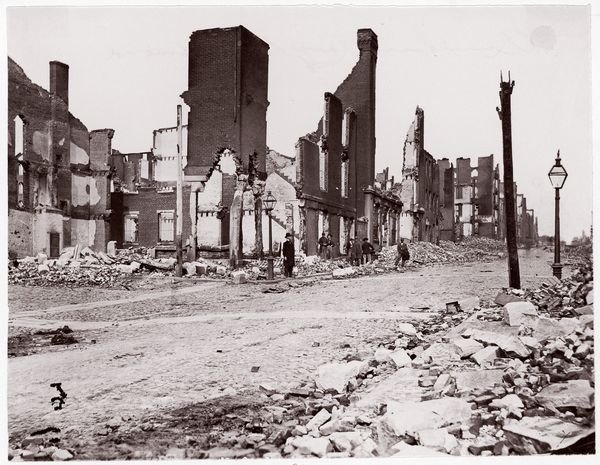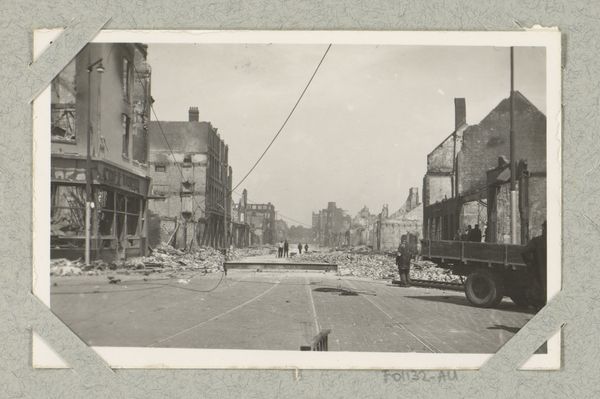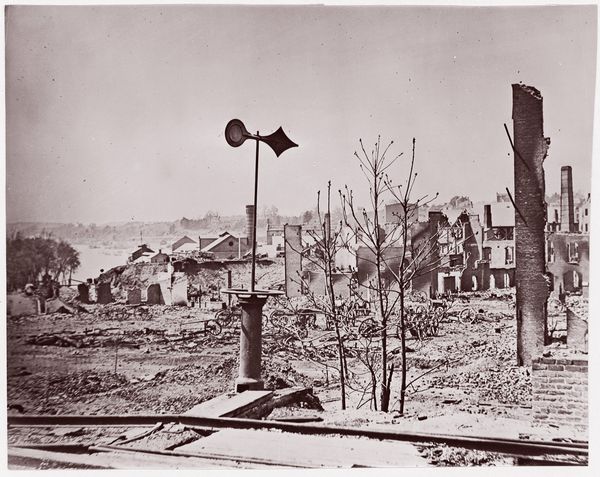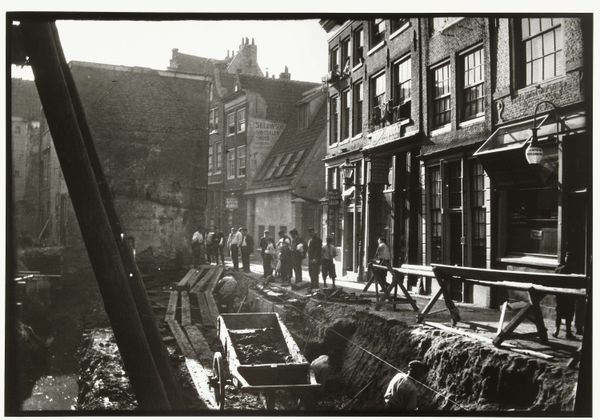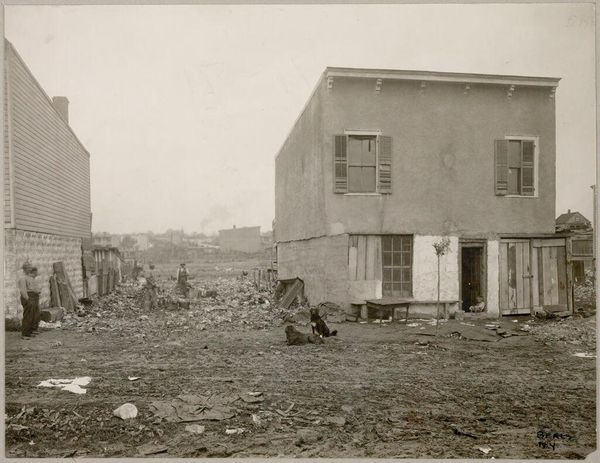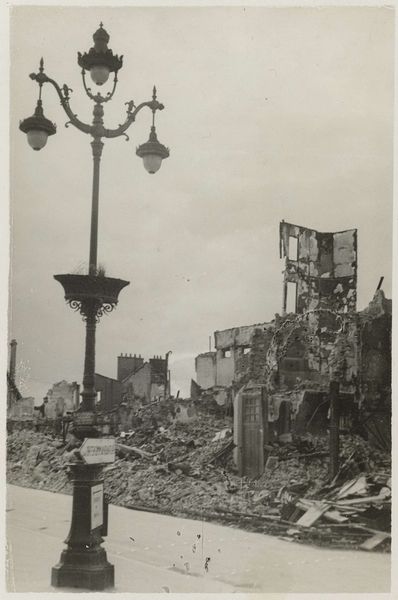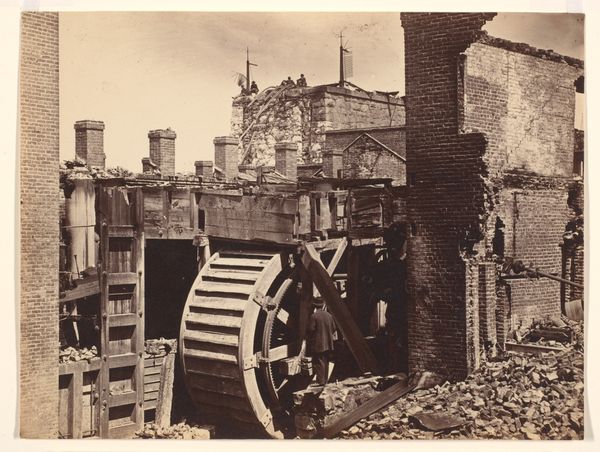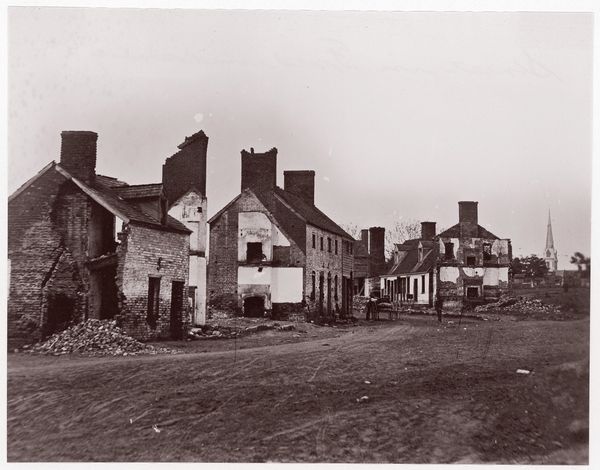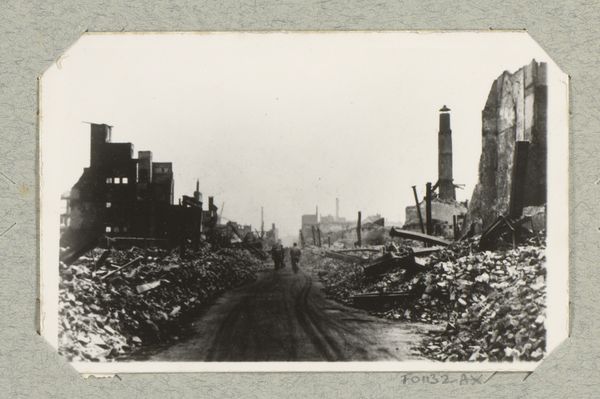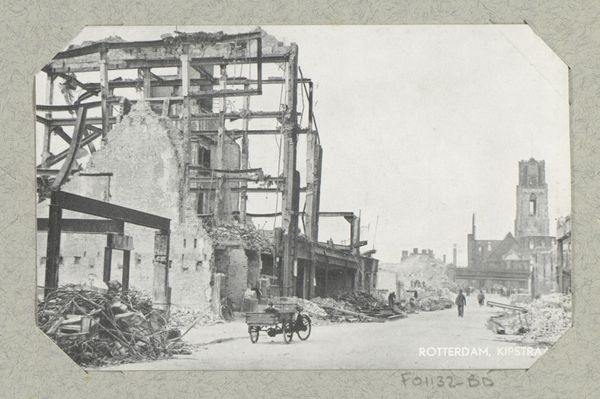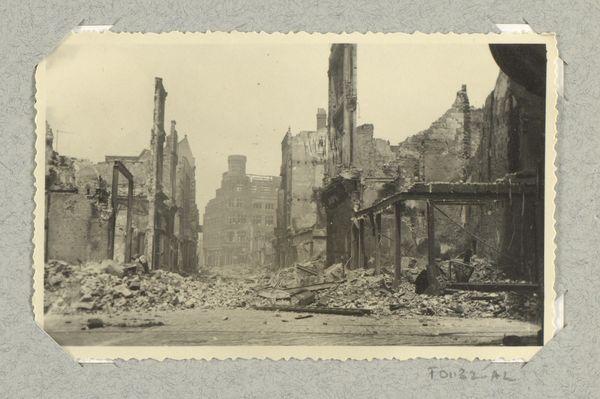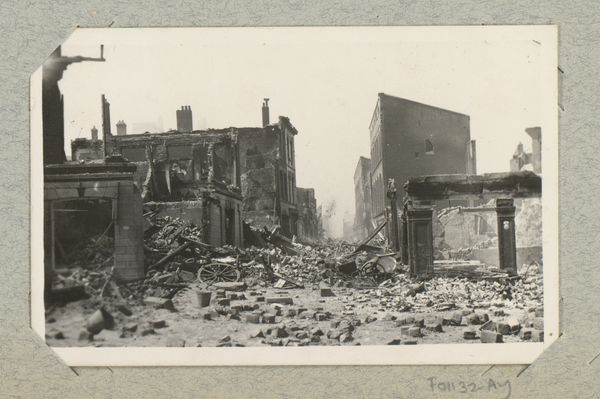
print, photography, photomontage
#
black and white photography
# print
#
landscape
#
black and white format
#
street-photography
#
photography
#
photomontage
#
monochrome photography
#
modernism
#
realism
Dimensions: height 6 cm, width 9 cm
Copyright: Rijks Museum: Open Domain
Editor: Here we have an evocative black and white print, "Bomkrater in een weg" – "Bomb Crater in a Road" – created between 1940 and 1942 by an anonymous photographer. It captures a streetscape ravaged by war. The stark realism is intense; what do you see in this photograph, and how do you approach it? Curator: I see the culmination of industrial forces reshaping the urban landscape. Look at the debris – pulverized brick and mortar, scattered like so much refuse. This image isn’t just about destruction; it’s about the industrial processes of warfare laid bare. The making of a bomb crater is itself an act of labor, albeit a destructive one, altering the very fabric of everyday life. Editor: That's an interesting point, to consider bombing as industrial "labor". Does the anonymity of the photographer change your perspective? Curator: Absolutely. The lack of attribution shifts the focus away from artistic intention and towards the collective experience. It speaks to a shared trauma, a universal impact of war on materials, production, and consumption within a society under duress. Who made the picture is less important than the materials used and the consequences shown. What kind of lives were affected by the interruption of production by warfare? Editor: So, you're focusing less on the individual's vision and more on the socioeconomic impact visualized here? Curator: Precisely. How the war economy literally consumed the street – the material reality, the homes, the sense of place – transforming them into rubble. Consider also the labor needed to rebuild after this crater was formed. Editor: I see that more clearly now. It is about the complete upheaval of daily life at all levels – from the built environment, and manufacture, to individual experience. Thanks for shifting my perspective. Curator: Indeed. This work pushes us to examine the material realities of conflict, underscoring that even in devastation, systems of production, labor, and rebuilding persist.
Comments
No comments
Be the first to comment and join the conversation on the ultimate creative platform.

